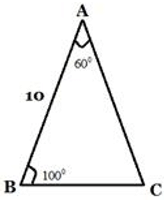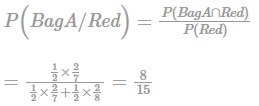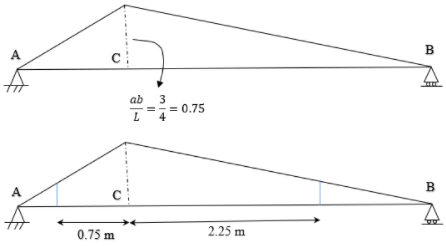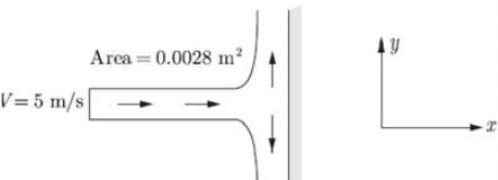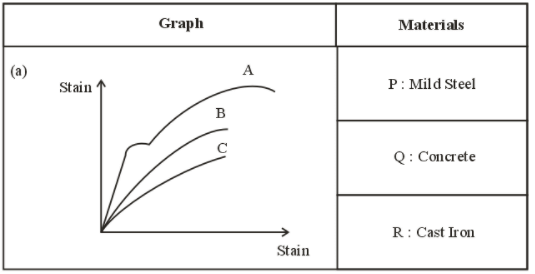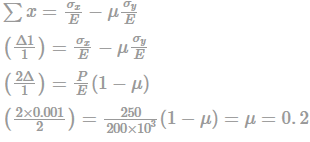Practice Test: Civil Engineering (CE)- 12 - Civil Engineering (CE) MCQ
30 Questions MCQ Test - Practice Test: Civil Engineering (CE)- 12
In the following question, four words are given out of which one word is incorrectly spelt. Select the incorrectly spelt word
The smallest angle of a triangle is equal to two thirds of the smallest angle of a quadrilateral. The ratio between the angles of the quadrilateral is 3: 4: 5: 6. The largest angle of the triangle is twice its smallest angle. What is the sum, in degrees, of the second largest angle of the triangle and the largest angle of the quadrilateral?
If x : y = 3 : 2, then the ratio 2x2 + 3y2 : 3x2 - 2y2 is equal to
In the following question, out of the five alternatives, select the word similar in meaning to the given word/phrase.
Thinking too much about something
In the following question, out of the four alternatives, select the word opposite in meaning to the given word.
Adipose
Select the related word/letters/number from the given alternatives.
Psychology : Mind :: Arithmetic : ?
Select the most appropriate option to fill in the blank.
As he could not execute the work properly, he had no option _____ to leave the organization.
In a triangle ABC, angle A = 60o , angle B = 100o and AB = 10cm. find AC.
What is the equation of the line which passes through the points (-1,2) and (4,-3)?
P and Q can do a project in 25 and 50 days respectively. In how many days can they complete 18% of the project if they work together?
If the median of (x+1), (x-1), (x-4), (x+4), (x-3) is zero then the value of x is ________?
A box contains 2 identical bags A and B . Bag A contains 2 Red and 5 Green balls. Bag B contains 2 Red and 6 Green Balls. A person draws a ball at random. If the drawn ball was Red what is the probability that it was from bag A?
If 2x - 3y = 24 and 3x + 4y = 2, find the value of x - y?
If A and B are invertible matrices, then inverse of AB is:
A 400g/L solution of common salt was discharged into a stream at a constant rate of 45l/s. At a d/s section where salt solution is known to have completely mixed with the stream flow equilibrium concentration was read as 100 ppm. If a background concentration of 18ppm is applicable, then, the discharge in the stream in m3/s is ___________.
Find the maximum bending moment occuring at the point C due to a moving uniform load of 2 kN/m having a length of 3 m.

A prestressed concrete beam of size 300 mm × 900 mm is prestressed with an initial prestressing force of 810 kN at an eccentricity of 360 mm at mid-span. Stress at the top fibre due prestress alone
For two cycles coupled in series, the topping cycle has an efficiency of 40% and the bottoming cycle has an efficiency of 30%. The overall combined cycle efficiency is:
Which of the following statements is incorrect?
A horizontal jet of water with its cross–sectional area of 0.0028 m2 hits a fixed vertical plate with a velocity of 5 m/s. After impact the jet splits symmetrically in a plane parallel to the plane of the plate. The force of impact (in N) of the jet on the plate is
Read the following statements:
i. The minimum spacing required for the longitudinal reinforcement increases as the grade of steel increases.
ii. Less strain is required due to the high grade of steel.
Which of the above statements are incorrect?
A portal frame is loaded as shown. Find the angle θB if it has a sway of 12.5/EI.
(Consider usual sign convention)
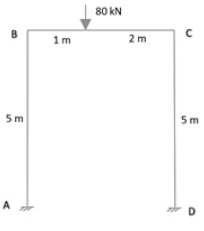
Which of the following statements are true?
1) Slope deflection method is always used for determinate structures.
2) Slope deflection method is the displacement method.
3) Modified slope deflection equation is used when one support is hinged.
4) Superposition cannot be applied in slope deflection equations.
Efflorescence of the cement is due to the excess of
A bar of circular cross-section is clamped at ends P and Q as shown in the figure. A torsional moment T = 150 Nm is applied at a distance of 100mm from end P. The torsional reactions (Tp, T0) in Nm at the ends P and Q respectively are

A stepped cantilever is subjected to moments as shown. The vertical deflection at free end is
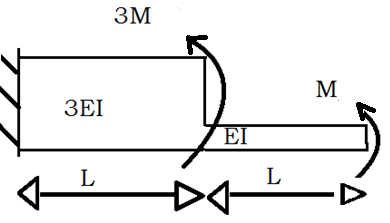
A square plate of dimension L × L is subjected to a uniform pressure load p = 250 MPa on its edges as shown in the figure. Assume plane stress conditions. The Young’s modulus E = 200 GPa.

The deformed shape is a square of dimension L = 2δ. If L =2m and δ =0.001 m, the Poisson’s ratio of the plate material is ____.




